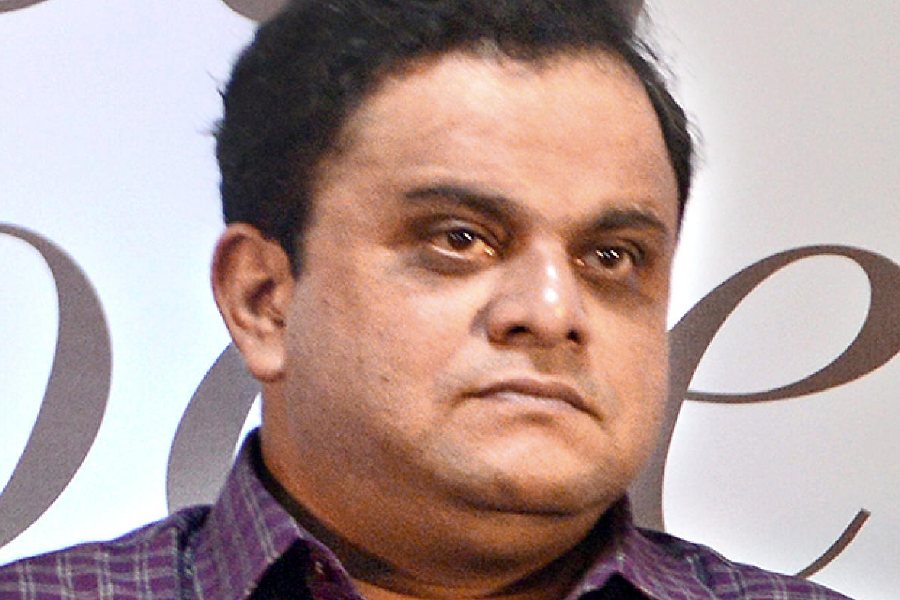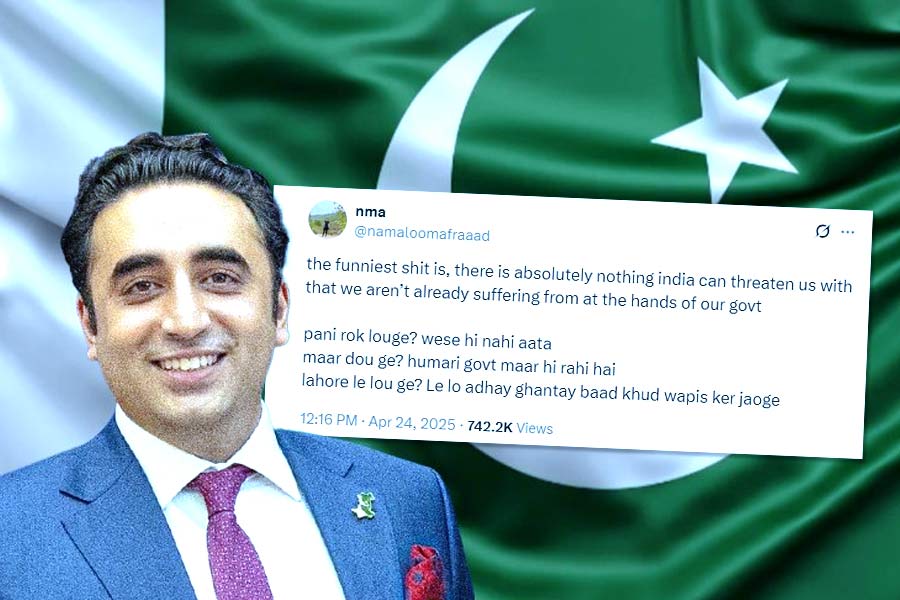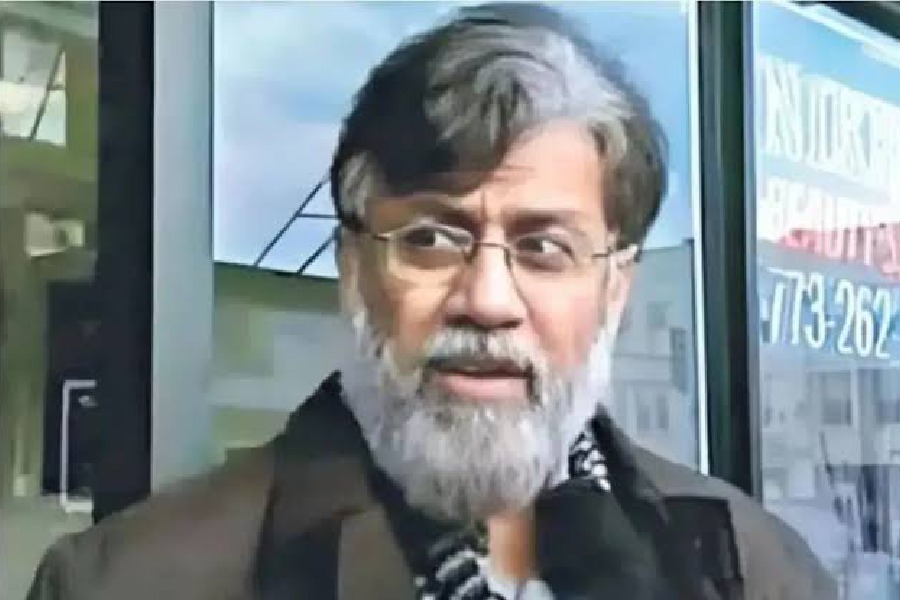 |
| CPM workers in Burdwan after last week’s murders |
Calcutta, Feb. 26: Neighbourhood tough today, political leader tomorrow. Is Bengal going the Uttar Pradesh way?
Not that the question hasn’t been asked before. But the murder of two CPM leaders in Burdwan last week has brought back to focus the increasing criminalisation of politics in Bengal.
Bhadralok politicians are still there but they are either getting more and more marginalised or are surviving at the mercy of criminalised leaders or criminals.
In Burdwan, the CPM was the victim of such politics and the Trinamul Congress the alleged villain. Ironically, the CPM has to take the largest share of the blame for the criminal-politician nexus.
It was in the same district that one of the most brutal political killings took place in 1970 — the Sainbari massacre, where four members of a family were murdered by alleged CPM cadres.
The nexus evolved not just because the CPM was in power for 34 years but because the use of violence — the so-called half-partisan warfare — has always been part of the party’s political strategy.
The graduation from a tough to a leader unfolds like this.
The local tough gets noticed and is hired by the neighbourhood politician. Slowly, the tough creates his own space, first by becoming a party member and then rising up the leadership ladder — a seat in the panchayat or municipality, a position in the zonal or district leadership, then an Assembly ticket and finally, ministership.
For the top leaders, the criminal elements come in handy in all sorts of ways — from terrorising voters to mobilising local people for party programmes to extortion in the name of party funds.
The top leaders provide encouragement, shelter, protection from police and money to the hoodlums. Not all these encouragements are secret.
One of the most notable instances of a prominent leader supporting such elements was late CPM state secretary Promode Dasgupta’s (in)famous remark: “If they (CPM’s enemies) throw bombs at us, shall we throw back rosogollas?’’
One more example of such encouragement emerged when it was found that the CPM was allegedly providing shelter to hardened criminals inside Salt Lake Stadium.
Later, generations of party leaders have followed the PDG line in this regard. The late Subhas Chakraborty, Tarit Topdar, Lakshman Seth and Sushanta Ghosh were among leaders who used musclemen, a CPM source said.
CPM leader Lalu Alam had allegedly hit Mamata Banerjee on her head with an iron rod in broad daylight on a south Calcutta street in an incident that shook Bengal politics.
“Criminalisation of politics began under Congress rule in the country. In Bengal, we were in power for so long. That led to local leaders becoming power centres with the help of criminals. The party tolerated this for the sake of keeping the organisation intact,’’ a CPM leader said.
But as Wednesday’s Burdwan murders showed, criminals have changed their political affiliation with the change of regime. Many anti-socials owing allegiance to the CPM have switched to Trinamul in the past nine months. Even state Congress leaders have repeatedly pointed to this phenomenon in recent months.
Asked about this, retired IPS officer and former Calcutta police commissioner Prasun Mukherjee told The Telegraph: “Criminals get associated with or join parties for political immunity, and politicians make them do the dirty job. During my long career, this has been my experience.’’
Mukherjee, who had held the posts of deputy commissioner (detective department) and deputy inspector-general (CID), added: “Hoodlums will always have the tendency to switch to the ruling party. But it’s for the party in power to guard against such infiltration. Otherwise, criminals will rule the roost.’’
However, it’s not only that CPM-backed criminals are switching sides. Trinamul too has its band of hoodlums, sources said. A common justification that Trinamul leaders offer is that the party needed to pay back the CPM in its own coin.
Mamata may have brought in a number of people from the field of culture, film personalities and former bureaucrats before the Assembly elections last year to give Trinamul a different image but it’s no secret that much of the real power in the party derives from some of the supposedly tough leaders whose links with goons are public knowledge in their localities.
“Amake boma dekhachhe CPM. Ami jekhane uthechi, boma marte martei uthechi (the CPM is trying to act smart by trying to scare me with bombs. But I have reached this level in the party by hurling bombs),” a Trinamul leader who was once a Congress MLA said.
Being a comparatively weak party in Bengal now, the Congress does not attract such elements as it used to earlier. Infamous criminals had the support of the Congress even during B.C. Roy’s time. During Siddhartha Shankar Ray’s regime, goons and the police were used in the fight against the CPM and the Naxalites.
These days, however, there are some Congress leaders who carry the dubious reputation of being “masters of criminal gangs”. Mamata had once mentioned Murshidabad strongman Adhir Chowdhury as a “criminal leader’’.
Other parties have their share of guilt as well. But the CPM remains not only the original sinner but also the party that did all this on a really big scale.










